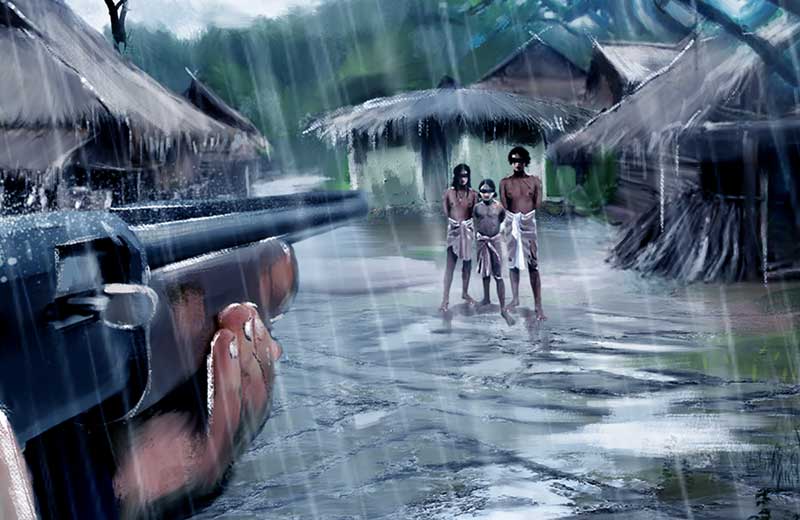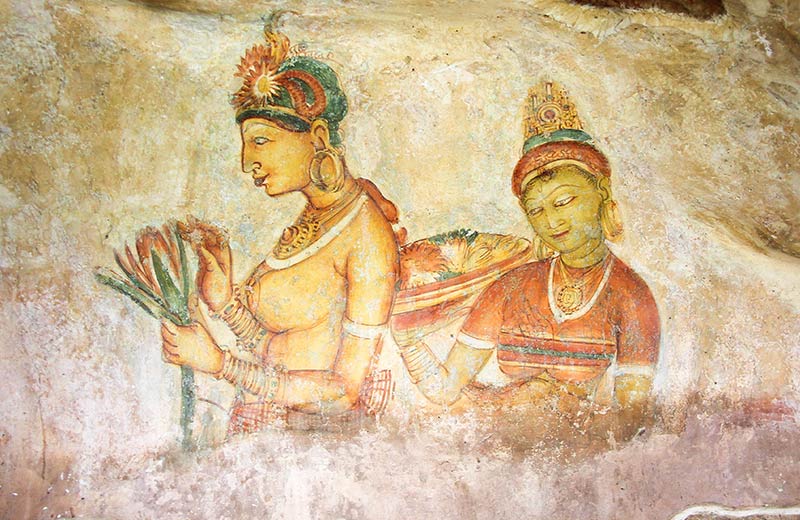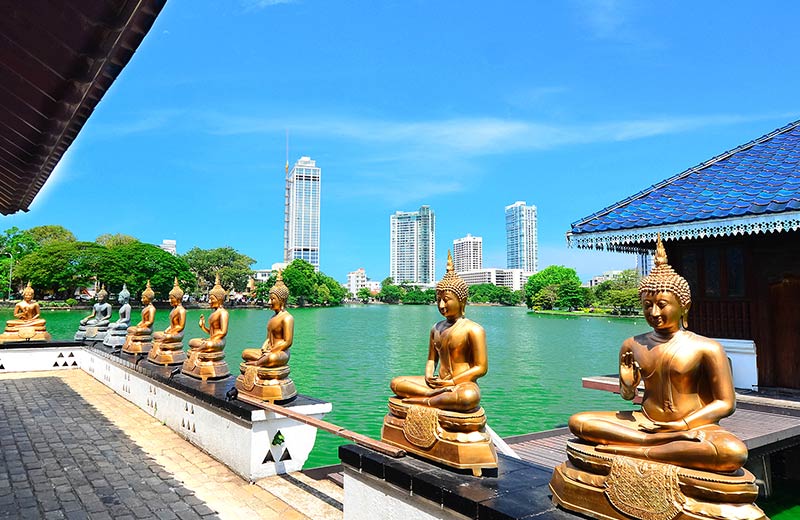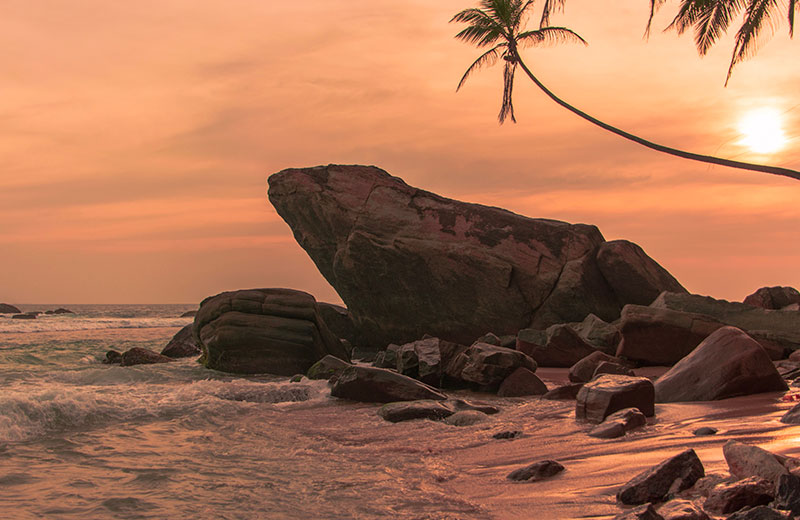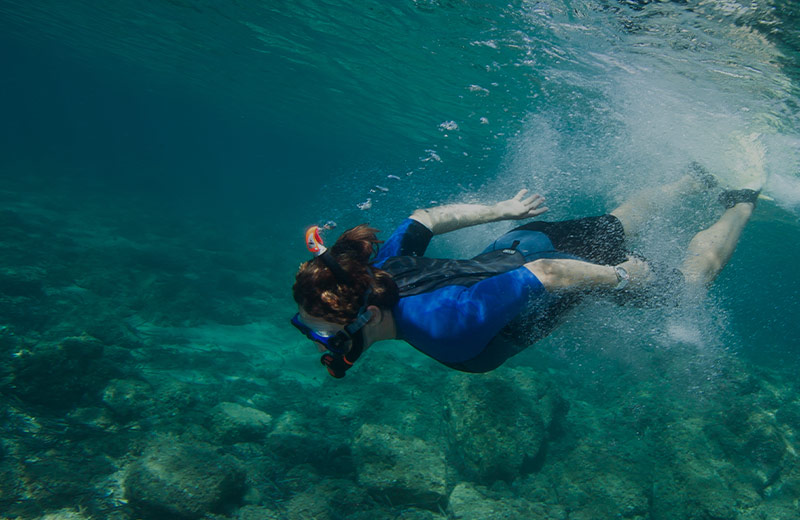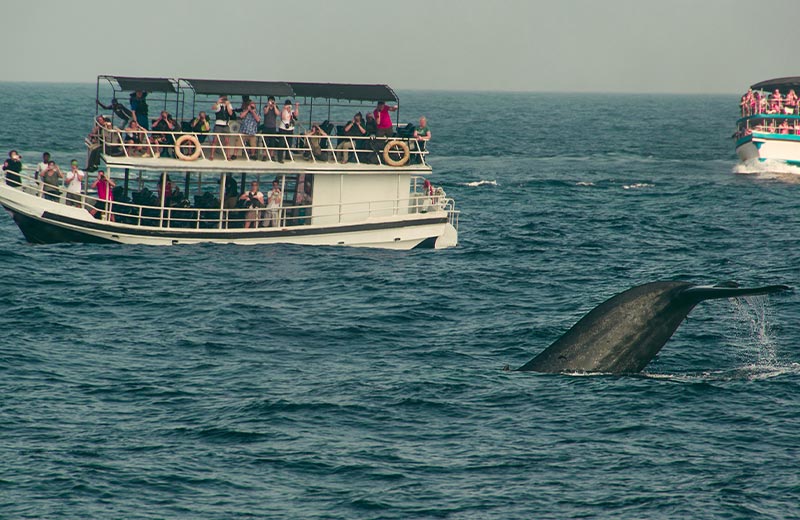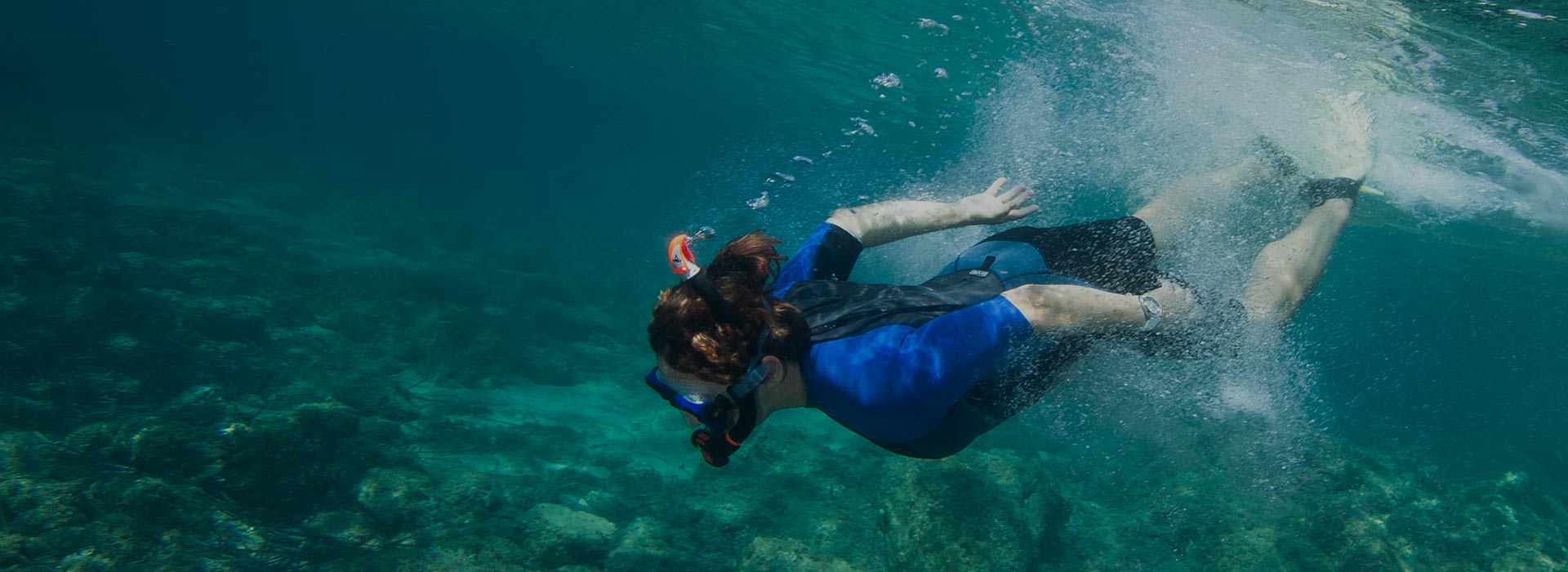November to May
Kalpitiya
The Bar Reef, located 2 km off the coast of Kalpitiya, is Sri Lanka’s largest coral reef and largest protected marine area. The clear water, tremendous variety of tropical fish, and a depth up to 3 meters makes it the best location for snorkelling in Kaplitiya. It’s also a great site for beginners to learn how to dive, as a variety of shallow dives are possible. The reef is home to over 150 species of coral and over 280 species of fish.
At a depth of 15 meters, the dense fish life and beautiful corals make Bulldog Reef a great place for macro lovers and underwater photography. Some of the species that can be found here include, crocodile fish, moray eels and panther turbots.
The Kalpitiya Ridge spans about 2 km in length and offers dives at a depth of up to 30 meters. In addition to exploring underwater caves, divers can also see rock cod, large grouper, humphead wrasse and plenty of tropical fish here.
Other good dive sites in Kalpitiya include Davey’s Reef, Trevally Pass and Moray Ridge. The underwater currents in Kalpitiya are generally not strong, but they are affected by the changes in tides – two high water and two low water. The wind is minimal and water temperatures rarely drop below 23.5 degrees Celsius. It is advisable to wear a wet suit to protect against bruising from corals.
Hikkaduwa
The famous beachside tourist town of Hikkaduwa is considered to be one of the best places for snorkelling and scuba diving in the southern coast. It has fully licensed diving centres and PADI instructors, and is suitable for both beginners and advanced divers. The coral reefs around Hikkaduwa are among the most diverse and accessible in the country and are ideal for first-time snorkellers. About 60 species of hard coral and 170 species of reef fish have been recorded here. Some of the colourful reef fish that can be seen here are angel fish, butterfly fish, parrot fish and snappers.
Scuba divers can venture forth into the deeper reefs and rock formations that are abundant with marine life. Kiralagala, Godagala and Black Coral Point are some of the popular sites for underwater exploration and stunning photography.
Hikkaduwa is also a great location for shipwreck diving. The SS Conch lying off the coast of Akkurala is an oil tanker which sank in 1903. Apart from the wreck, the site is full of marine life and corals. The diving depth here is 14.22 meters, and divers can swim into the shipwreck. The four masted iron sail ship, Earl of Shaftesbury, sank off the coast of Hikkaduwa in 1893. Today, the wreck of the ship lies scattered over the sandy terrain at a depth of 15 meters. It is generally inhabited by large stingrays, groupers, snappers, lionfish, as well as porcupine fish.
Unawatuna
Unawatuna is famous for its sandy beaches as well as for snorkelling and diving. The coral reefs of Unawatuna Bay are teeming with colourful marine flora and fauna, just waiting to be explored. The waters of Unawatuna are perfect for snorkelling, because of its many shallow spots. Another must-visit site is Jungle Beach, a beautiful beach and a great spot for snorkelling. You will see schools of colourful fish, crabs, moray eels, trigger fish, parrot fish and barracudas here.
The coast of Unawatuna has many fascinating shipwrecks that are great for scuba diving. The SS Rangoon is located directly in front of the Galle Fort. It is a British steamer which is believed to have sunk well over 100 years ago, and now lies on a sandy plain. Interestingly, the Rangoon rests in an upright sailing position, making it a rather interesting site to explore. The wreck is full of marine life including blue striped snappers, rabbitfish, red soldierfish and blue fin trevally. Depth is 25-30 meters.
Weligama
In addition to its attractive sandy bay, Weligama is an ideal base for snorkelling and diving in the south. The coral reef here extends a remarkable 700 meters. Besides the colourful corals, you may also see many species of fish as well as sea anemones. The site is not very deep, and the seabed is a rather flat area, ensuring good visibility. The Yala Rock is a multi-level rocky area in Weligama. Apart from the massive rocks, there are also some caves that contain a variety of fish. The dive here generally starts at 15 meters. The Prince Heinrich Patch is an underwater hill which is great for seeing big rays, parrotfish and giant morays. Maximum depth of this dive is 22 meters.
Colombo
Colombo has a large number of wrecks ranging from World War I era armed merchant ships to a brand-new ship that sank in 2009. Apart from wreck diving, Colombo also has some great reefs to explore.
Gorgonian Gardens is a seabed filled with majestic Gorgonian fans. At a depth of just over 35 meters, the site is a flat seabed covered in varying sizes of fans. Amidst these fans are large numbers of red tooth triggerfish. This site is appropriate for experienced divers.
The Barracuda Reef, located just outside of Colombo in Mount Lavinia, is a long reef that is full of marine life. You will be able to see snappers, fusiliers, rabbitfish and barracudas here, in addition to a wide variety of macro life. The site is between 20-23 meters in depth.
The SS Worcestershire, an armed British merchant ship, sank in 1917 during the height of the First World War. Its wreck is located about 12 km west of Mount Lavinia at
a depth of 57 meters. Although the shipwreck is largely broken up inside, it maintains its shape on the outside. The wreck is packed with marine life, including yellow fin trevally, grey snappers, giant trevally and groupers. This dive is suitable for advanced divers.
What is known as the Taprobane North Wreck is actually the British steam ship SS Perseus, which sank in 1917 after striking a German sea mine. Located 20 km off the coast of Colombo, the vessel lies at a depth between 30-40 meters. It is covered in soft corals as well as black corals, and is home to fish such as snappers, napoleon fish, trevally and grouper. This dive too is suitable for advanced divers.
